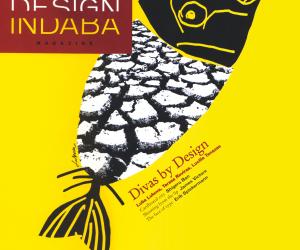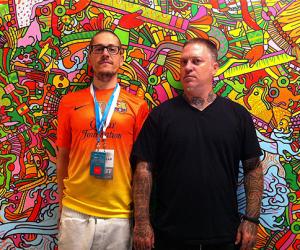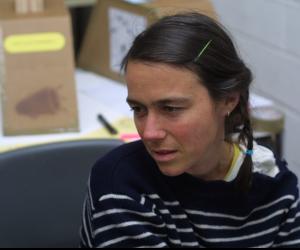First Published in
Joshua Davis is a visual, virtual artist – the mouse is a brush, the pixels are paint. By his own admission, his work is not always useful. It doesn’t always answer questions. And it quite often borders on the mundane. He also admits to failing quite often.
So why is his work exhibited at numerous galleries and museums in New York City? Why was his one-man research and development site, www.praystation.com, lauded at the 2001 Prix Ars Electronica for its educational and community-building elements? Why is he invited to speak at all the major new media gatherings worldwide? And why does Macromedia ask him for advice?
I doubt many of your online groupies are aware of this, but you’re a traditionally trained oil painter. How did you make the leap from oils to working in the digital medium?
I moved from Colorado to New York City to be an artist - as you do - and while still at art school, I worked on illustrations for children’s books. You know, no big words; lots of pictures; and it’s got to be over in 20 pages. But I couldn’t get published. Then a college friend told me about this Internet thing where you could self-publish, so I went and bought a book on writing HTML and JavaScript and that was 1992, Netscape 2.
During the day I was doing traditional art and at night I was teaching myself this mark up language. The Internet was relatively new then so as a natural consequence, my art and the technology I was learning started merging. Now they have a symbiotic relationship.
How do you translate what you learned during your classical art training into your new media work?
I’m a really old-school traditional oil painter in the sense that I actually make my own paint. I go out and buy the pigments and mix the paints and the resins. Weird as this may sound, I paint exactly like Jan van Eck. When I’m painting, it’s such a passionate, intense, meticulous process. That hardcore intensity and painstaking approach is exactly how I treat my programming. No pixel is unaccounted for. I’m always asking, is my programming elegant, even if people don’t see it? Is the process of creation perfect, by my own standards? Am I trying to write beautiful code? Is it executing efficiently? If you’re not willing to make sure that every brush stroke, every pixel is perfect, then the work as a whole can never be perfect - and that tells people you just didn’t care enough.
As an artist, what would you like to see design do?
Bring back the imagination.
We spend more time watching other people’s lives on TV than tending to our own and I think it’s killing our society’s imagination.
I come from an Internet and technology perspective and our medium is about engaging and challenging the viewer. I would really like to see new media design fundamentally challenge people and get them thinking and imagining again.
Do you think designers have a responsibility to their own cultural tradition, or to raising awareness of particular issues through their art?
Yes and no. I think that the obligation resides on the discretion of the creator. People like Josh On and Amy Franceschini from Futurefarmers, for example, do a lot of politically motivated work because those are issues that they believe need addressing.
People might look at my work and say it does nothing. I’m unashamedly a big fan of the uselessness and mundane. My work is about imagination. What do you think the piece does? It’s about presenting a very abstract question and then letting you figure out what you want the answer to be. So while it doesn’t present any political issues, on an abstract level it tries to touch on spiritual issues.
Can designers and artists effect change in their societies? Is there a moral consequence to their work?
I do believe we have the power to change things beyond what we think we can. I wonder if South African designers realise how much power they wield. Because if you leave it to your politicians to make social change, it’s never going to happen.
Given that you’ve been integrally involved in digital media since 1992, and have experienced its influence and growth quite intimately, what really excites you about the potential of the Web today?
Various incidences have got me interested in the idea of the public group experience which has largely fallen by the wayside [like theatre, for example]. But I see a new shift happening where perhaps TV falls by the wayside and this new Internet-based group experience takes over.
The promise of new media is its interactivity. That you can participate in the experience and be part of the community; you can be heard but remain anonymous. Which is a bit scary but hugely fascinating and I think that’s where it may be going.
The argument against it is that it may destroy our society, but look at it from this angle: my wife takes me to a “chick flick”. I sit in the audience and see other men who have been dragged there by their wives. God forbid we emotionally respond to what is happening on screen because we’re men and men don’t cry. Not in public.
But I can have the same experience in the comfort of my own home, with a computer, and bawl my eyes out. I can emotionally respond to things that I might not respond to in a group because I’m free from stereotypes. That group experience would be really interesting to explore.
Computer-enhanced art on the Internet, as opposed to pure design, is a relatively new concept. How is the public responding? Are they taking it up or is it primarily person-to-screen access?
I’ve been working in the medium for almost 10 years and am only just starting to do gallery shows. I’m currently working on my fifth museum project and it seems museums are getting hip to the idea that this could be an ‘art experience’; the awareness is starting to seep in. But it’ll take more serious education of gallery owners and museum curators, as well as the public. It’s a totally new type of art so I think most people’s perception is, “What the hell is this?”
So what the hell is it?
It doesn’t matter. It’s whatever you want it to be. And that’s probably 10 times more interesting than what I could tell you it is for me.
You’re a programmer and an artist. On one side, it’s precision maths, on the other is expressive creativity. And at the end of it all, because you have computer intervention, you can’t be sure of what the viewer eventually sees; it is always unknown. Given all these seeming paradoxes, does it not bother you that you can never really determine the viewer’s experiences?
No. I use programming to construct a set of rules, colours, brushes and boundaries for the computer to work with. I turn the machine into a digital artist and it creates the end product. I’m just the puppet master.
On a basic level, my work always contains two objects and their relationships. Although the math is rigid, it is employed to create chaotic or random and unexpected events, accidents, surprises. The maths isn’t used to make deliberate actions. It’s there to establish an object’s behaviour … and then another object’s behaviour. What you watch unfold is the relationship between those two objects and their behaviour, and it is that relationship that is unknown. That’s where it gets interesting, and where the viewer gets whatever they want from it.
In your Design Indaba® presentation, you frequently referred to your own work as “this old piece of rubbish” or “so I did it. So what? It’s useless.” How seriously do you take your work?
Very seriously. I’ve never used those references before but here’s why I did: I always let my environment dictate what I should talk about. From listening to the other speakers, I realised that there wasn’t a presentation about play, about uselessness. And I wanted to tell people that it’s okay just to play.
I often feel that the uselessness I engage in is just me stretching, pushing the boundaries. The work doesn’t necessarily answer any deep questions but the point is, I make it. And that’s my advice – make make make make make. Just make it, whether it’s useless or not. I make tons of mistakes. I find accidents and I exploit them. It’s at that level that the real work happens.
You’ve been called a superhero; hailed as the godfather of Flash; and there’s an almost evangelical praystation.com culture that exists out there. For the Web programmers and designers who want Joshua Davis Inc information, what is your favourite website?
I’m not going to answer that. I think surfing for inspiration is quite dangerous. If you want to bring something to the Internet that has never been seen on the Internet, then the last place you should look for inspiration is on the Internet. You should go out and live life and find things in life and then try to interpret that in your work, which just happens to be on the Internet.
So where do you find your inspiration?
Not on the Internet. Ever. I read. Books present ideas and it is these ideas that I try and interpret in my work.
I’m hugely influenced by nature. I’ve just read a book on fractal mathematics and the entire book is based on the construction of ferns; and that’s done wonders for my work. I think that nature has a lot to offer in terms of designs that we often overlook.
The other thing is cartography; I love collecting maps. There’s something rather clinical and beautiful about them. From a design point of view I’m a sucker for atlases and subways maps.
If you take the time to research certain things on really intense levels, really interesting design is presented.
What is your insight into the new version of Flash?
I was in Texas recently on a panel called Phat Pipes, talking about the future of broadband and where it can go from a design point of view. I opened by saying, “If you can’t rock it small, what makes you think you can rock it big?” If you have more bandwidth, great – you’re just going to make big ugly things instead of small ugly things.
If you’re always waiting for the next version to make you a better designer, it’s not going to happen. If you can’t take the time to do exciting things in Flash 3 or Flash 4, you’re going to be disappointed because there isn’t some plug-in in 6 that says “Instant Cool”.
I get very excited about new versions of software because they move the playground. But at root level, 99% of my time is spent working on concepts and then executing them and no new version is going to make me better. It may help in the execution but the most important thing is the concept.
You’re an ardent supporter of an open source community. You’re quite happy to share your own source code. And at the Design Indaba®, you practically gave 300 copies of your entire, 4 000 file hard drive away. Why?
Open source is the only way. That way everyone can push the boundaries and start to think differently. It’s as simple as that.
Have you got any major issues with the way the Internet is moving at the moment?
My war right now is against standards. While I understand their value, I think that they inhibit creativity.
There are people who tell you the Internet has to be a certain way and with that, you assume that everyone in the world is an idiot. Yahoo, for example, is nice but it’s designed for idiots. And when you treat people like idiots, they behave like idiots. Where you think there is no hope, you guarantee there is no hope.
What I’m suggesting is that we educate users and participants rather than assume that they’re idiots. Then there wouldn’t be all this need for standards.
So I think it’s important to ignore everything that I’ve just said. Just forget it. And in that ignoring, you may find your own mantra, or your own philosophy, and so expand your own boundaries.
What I’ve said only applies to me. Arthur C. Clarke said that you have to venture out of the realms of impossibility to make the possible, possible. So forget everything I’ve said and just go and make it happen for yourself.













